Shortly after announcing his retirement as a player, following an illustrious career out on the pitch, Carlos Tevez was announced as the head coach of Rosario Central in Argentina, making any football supporter born before the turn of the century feel incredibly old.
Central had won just five games from their first 20 in the Argentine Primera División, leading to the sacking of Tevez’s predecessor and former Internazionale player Kily González.
Tevez, an Argentinian legend, had never managed a club before and was taking his first steps into management, trying to save a sinking ship at the Estadio Gigante de Arroyito. However, so far, his tenure has not gotten off to the best start.
Since taking his first game in the dugout back at the beginning of July in a 2-1 away defeat to Aldovisi, the former Manchester United and Manchester City centre-forward has guided the Canalla to merely five victories in the same number of games as González.
Despite some solid performances during the summer months, Central have nose-dived recently with results and it’s unclear whether Tevez will be given time to turn things around.
This tactical analysis piece will look at the tactics that the 38-year-old has implemented during his time at the helm thus far, as well as looking at why the Argentine side have struggled recently.
Formations and tactical tweaks
Prior to getting the job, Rosario Central were primarily set out in a 4-3-1-2 formation under González and rarely swayed from this, although there were a couple of occasions where the side lined up in a 4-2-3-1, a 4-1-3-2 and even a more unorthodox 5-3-2.
However, Tevez looked to gain defensive stability from the get-go with his new crop of players. The ex-Argentine international switched to a 4-4-2 for his first match in charge, a shape that was maintained for a few games afterwards.
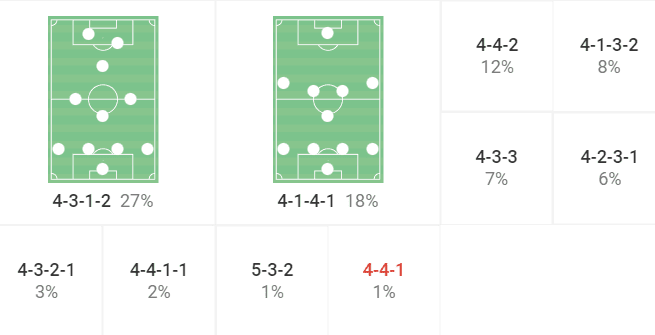
Unfortunately, receiving little success with the conventional structure, the new boss trialled a 4-2-3-1 and even a 3-4-1-2. Again, no dice.
It wasn’t until Central’s emphatic 3-0 away victory over Arsenal de Sarandí that Tevez found a formation that worked best for his team – the 4-1-4-1. While results have been up and down, the 4-1-4-1 has been Rosario Central’s preferred system over the past few months.
One characteristic of Tevez as a tactician, which has become apparent since taking the leap into management, has been his ability to tweak things tactically during games.
Even recently, in Central’s 1-1 home draw with Unión Santa Fe in the league, the visitors took the lead early into the bout and the hosts went in 1-0 down at the break. Having noticed the side’s frailties, Tevez replaced his two fullbacks and one of his number ‘8s’ for a winger, a centre-forward and a new midfielder, changing the shape from a 4-1-4-1 to a more rigid 4-4-2. Central equalised late on to salvage a point and prevent another devastating loss.

Now that we have established just how flexible Tevez is from a tactical perspective and the formations that Rosario Central use under his guidance, let’s perform an analysis to see how the young coach has implemented his principles into the team.
Building up through the pivot and playing long
When Central deploy a 4-1-4-1 formation, it becomes a 4-3-3 during the build-up phase. The plan from the coach is to make the pitch big, with the wide players staying high, holding the width on the flanks.
Furthermore, the three central midfielders keep quite distant from one another, while the number ‘6’ operates behind the opposition’s first line of pressure, screening the backline and goalkeeper, looking for a pass into feet to allow him to turn and potentially play forward.
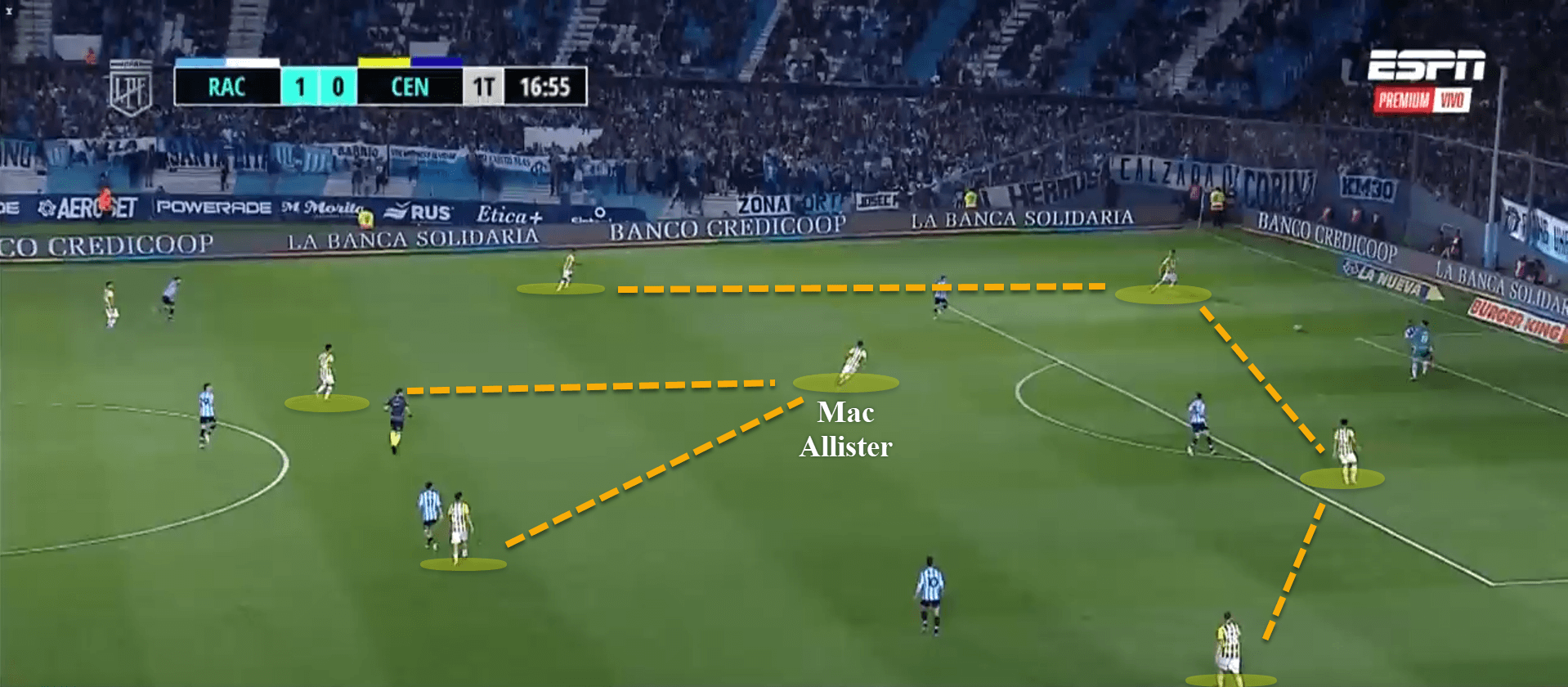
The positioning of the fullbacks is also important during this phase. The duo stay relatively high outside the penalty area, ensuring that their distance is close enough to the centre-backs to receive a pass comfortably while also keeping near to the single pivot on the same line to connect to the ‘6’ to allow for clean ball progression through the opponent’s press.
The single pivot in Tevez’s side has predominantly been Francis Mac Allister, the brother of Brighton and Hove Albion star, Kevin. His role is to maintain a positive body orientation, giving him the possibility to take the ball on the half-turn and advance Rosario Central’s play.
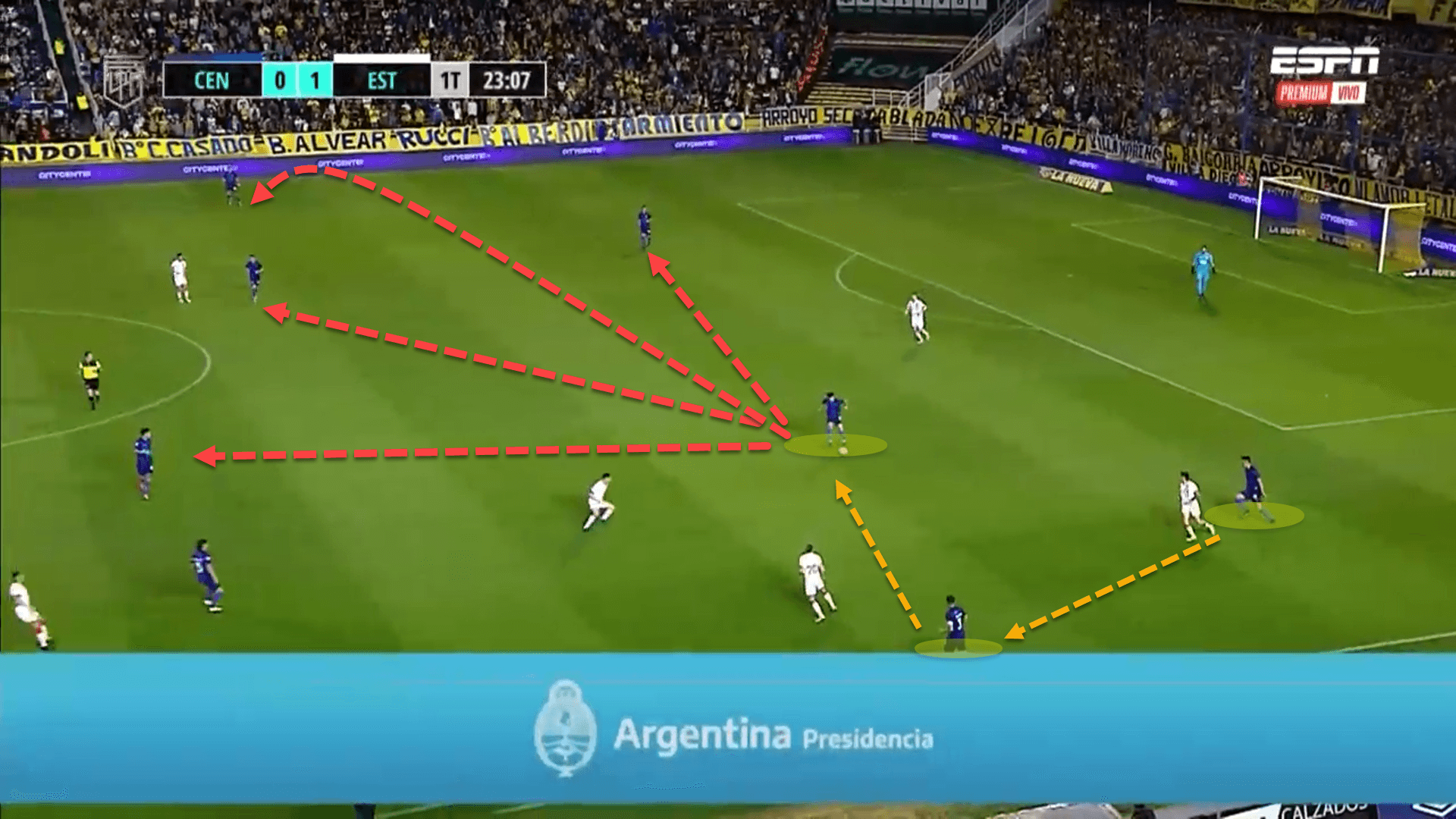
Here, we can see a relatively common passing pattern from Tevez’s men to bypass the opposition’s high pressing by moving the ball from the centre-backs out to the fullbacks who knock it inside to Mac Allister.
The 26-year-old has the correct body orientation to receive the ball on the half-turn which gives him a plethora of options to either play to one of his advanced midfielders, try and hit a runner into the channels, or else switch it out to the other side to the ball-far fullback.
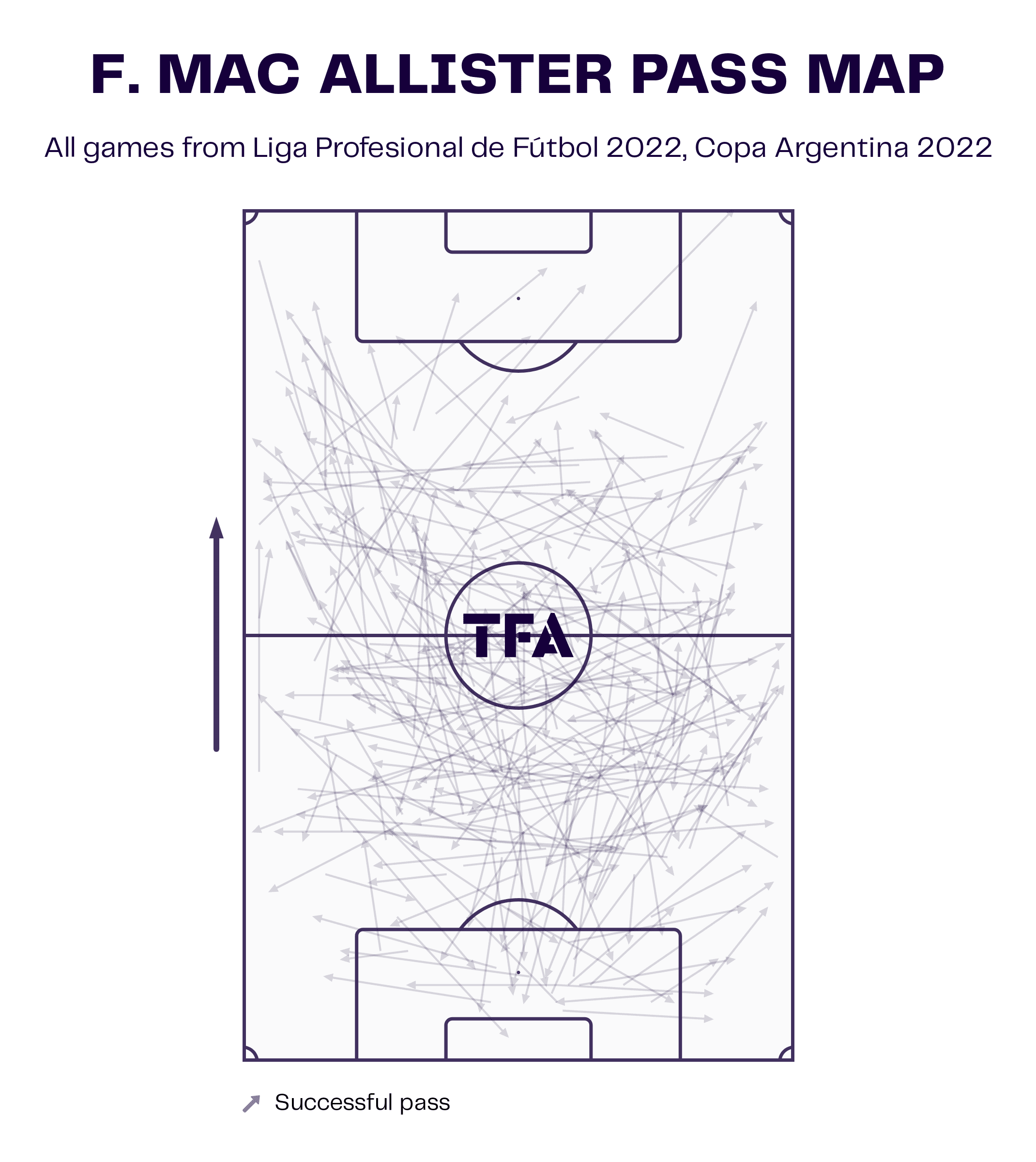
The visual above displays all of Mac Allister’s successful passes since moving to Rosario Central in the summer, around the same time that Tevez was appointed to the dugout, proving how vital he is to the team’s style of play under the relatively new manager.
What’s evident is just how dispersed his passing range is, with his pass map showing balls in behind the opponent’s backline landing in the final third, audacious switches of play, and simple short passes to help keep it circulated when necessary.
While Central do like to play out from the back, it’s potentially incorrect to call the Argentine side possession-oriented. Despite boasting above-average possession per game in 2022 of 52.7 percent, the strugglers do have a tendency to play long during the build-up phase as a means to escape the opponent’s high block. This can be seen from goalkeeper Jorge Broun’s pass map:
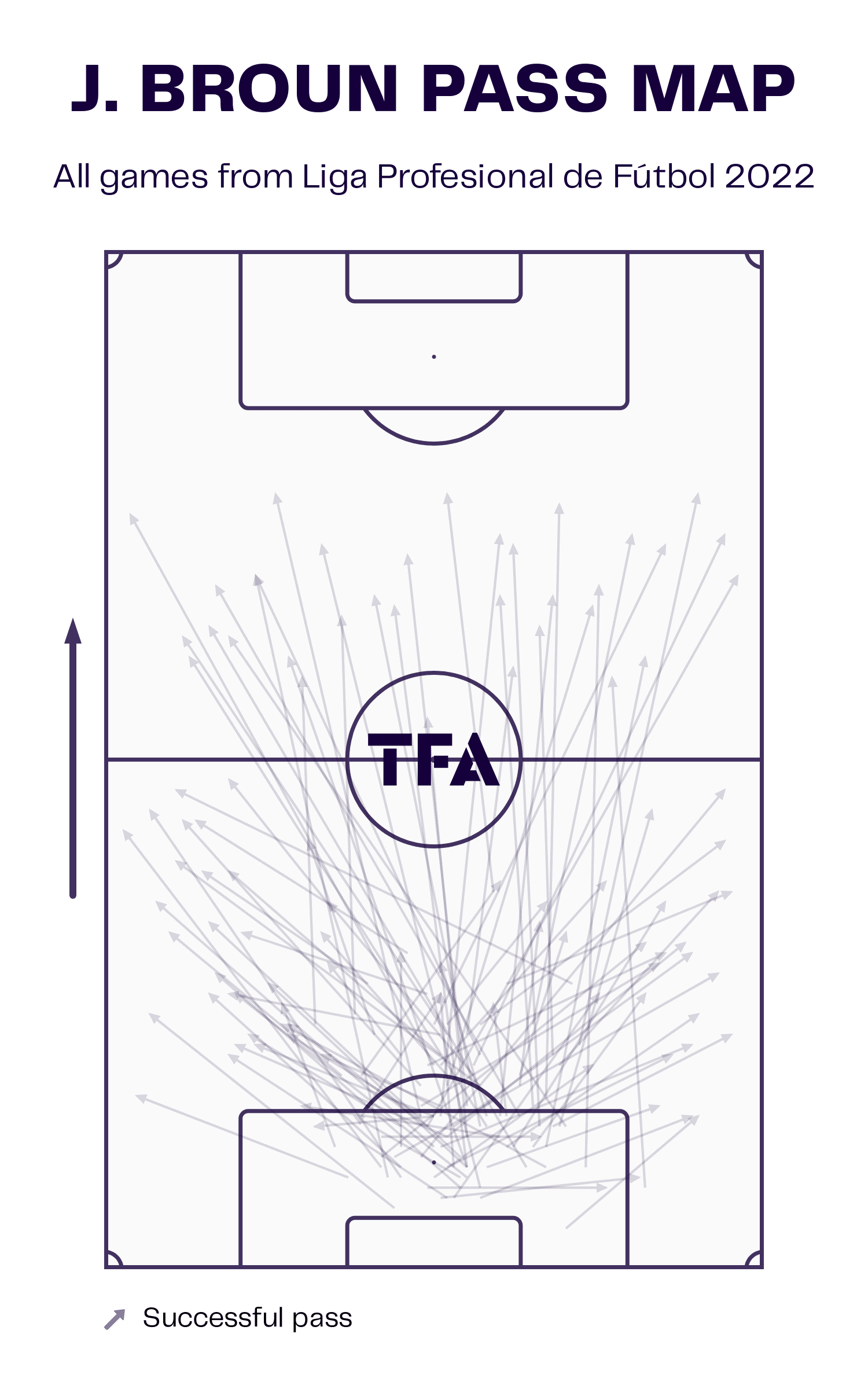
There are some shorter passes from Broun but there is also quite a high volume of long balls up towards the forward line.
This is an easy means of progressing the ball, although direct passes as such have a relatively low rate of retainment. Of course, the objective is to support the man challenging for the ball in the air, using runners in behind in case of a flick-on and players in front for times when the ball is knocked down.
However, Central’s ability to keep possession after going long from the centre-backs or the goalkeeper is rather lacklustre. This is due to a tactical fault of Tevez and his coaching staff.
As spoken about previously, the Canalla hold a highly dispersed shape when playing out from the back. This stretches the opposition’s block vertically and horizontally, creating gaps to play into. Nevertheless, the downside to such a wide structure is that the centre-forward is often isolated when holding the ball up, making it difficult for the team to retain possession in these situations.
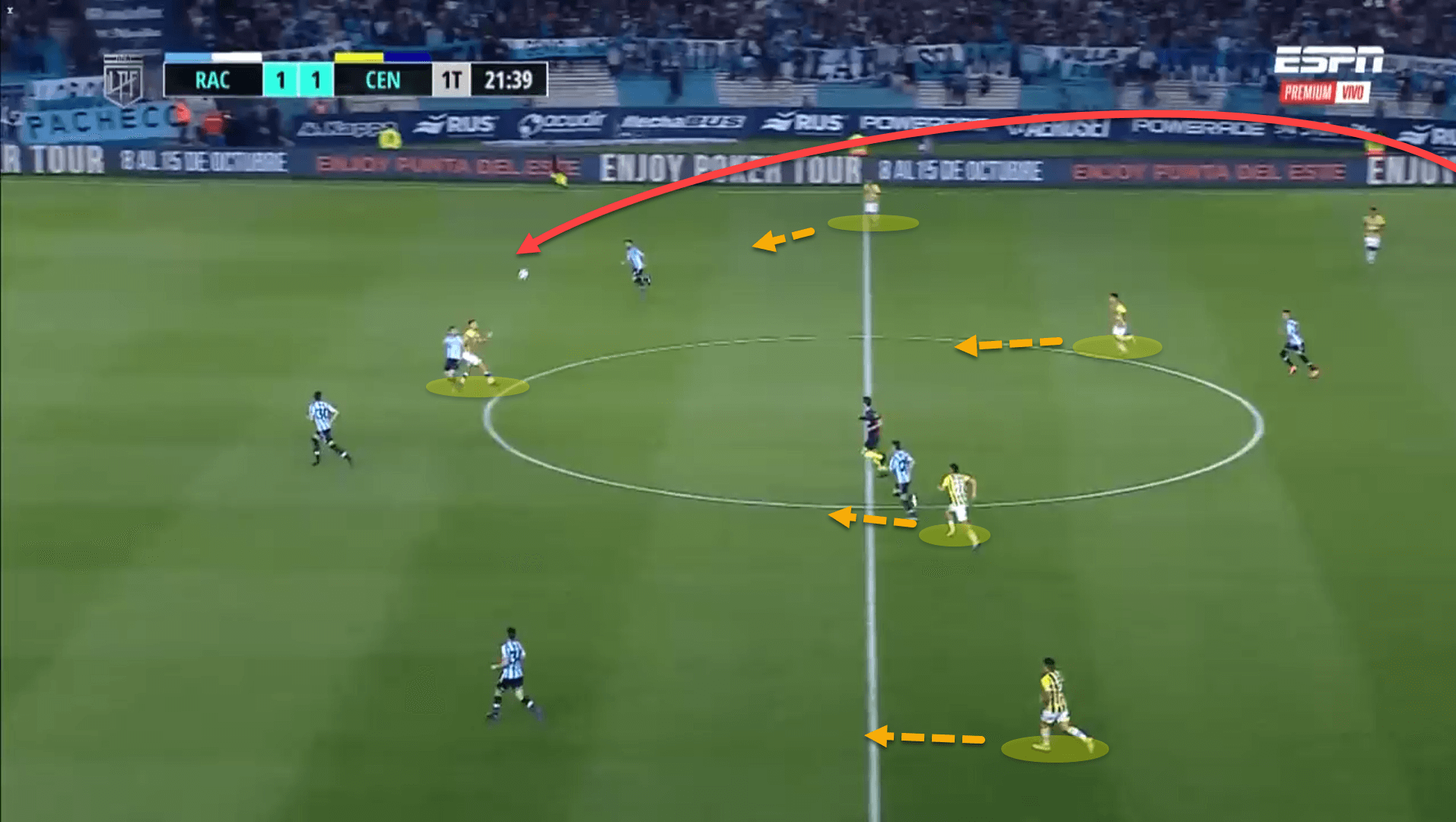
For instance, in this example, Rosario Central couldn’t escape Racing Club’s high pressure. Broun went direct to 19-year-old Alejo Véliz but the wingers were too wide and the central midfielders were not close enough to win the second ball in front or behind, allowing Racing to scoop away the danger from the youngster with ease.
Central’s best bet is to play out from the back as it hands them the best possible opportunity to consolidate a meaningful positional attack but, tactically, work must be done on the training ground to provide the centre-forwards with the right support structure when the side are forced to go longer.
Chance creation
When Central eventually progress the ball into the attacking half of the pitch and are attempting to break down the opposition’s deeper, more compact defensive block, the 4-3-3 switches between being a 2-3-5 and a 3-2-5, depending on the position of the single pivot.
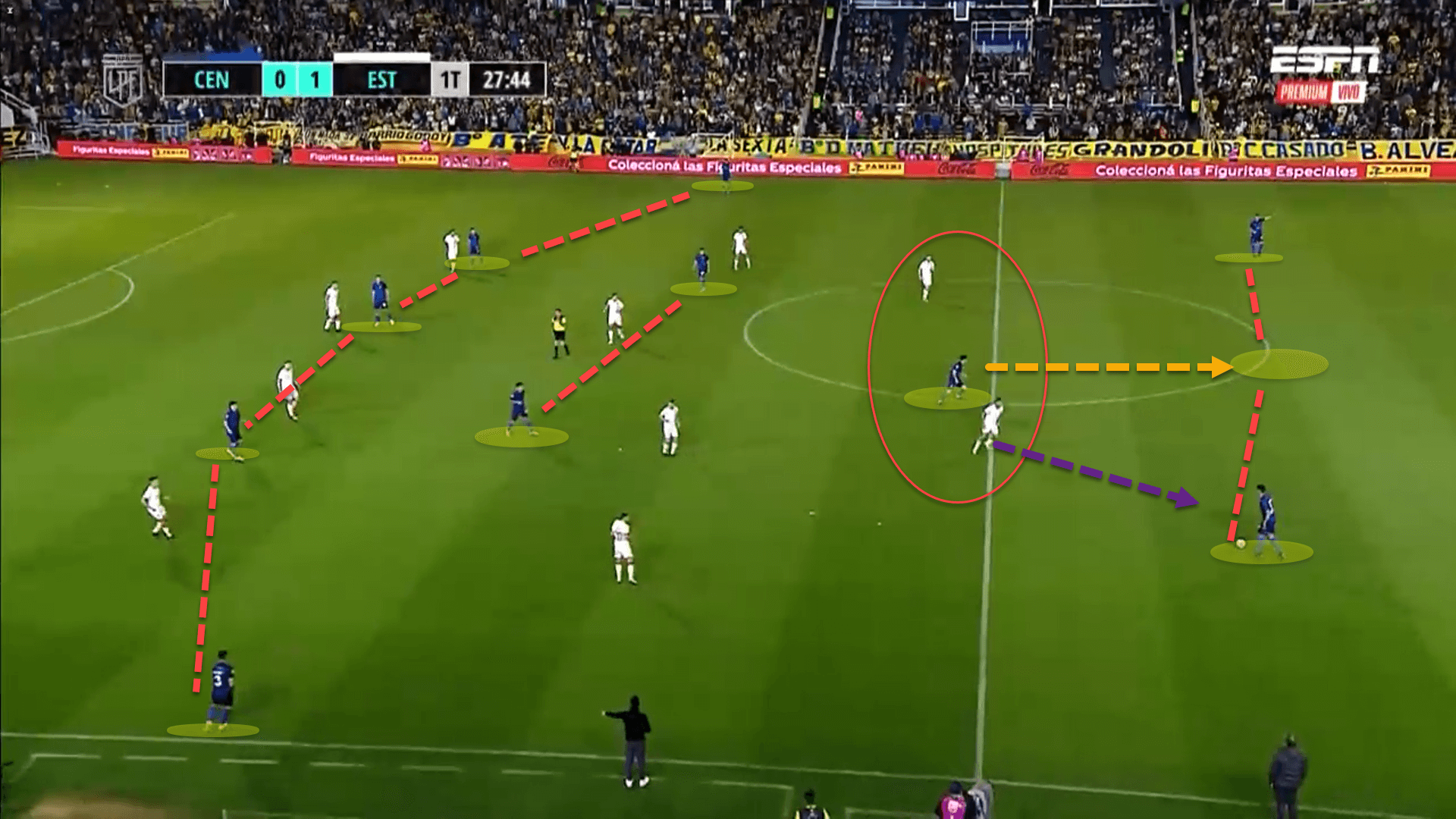
In this example, Mac Allister is roaming in the pivot space, which is the area behind the opposition’s first line of pressure. However, when the defensive side press with a two-man pairing up top, the ‘6’ drops in between the centre-backs to create a 3v2 in this area, allowing them to have numerical superiority.
In that same image, Estudiantes’ first line of pressure were not pressing the Rosario Central centre-backs. But when the right-sided striker began to move towards the ball carrier, Mac Allister recognised quickly that he had to drop to create a temporary three-man backline.
During this phase, the fullbacks position themselves really high up the pitch while the wingers invert and tuck inside next to the centre-forward, forming a five-man frontline, reminiscent of Liverpool under Jurgen Klopp.
When Central have a settled attack as such, Tevez instructs his players to try and break down the opponent’s defensive block through the wide spaces in order to utilise the strengths of the team.
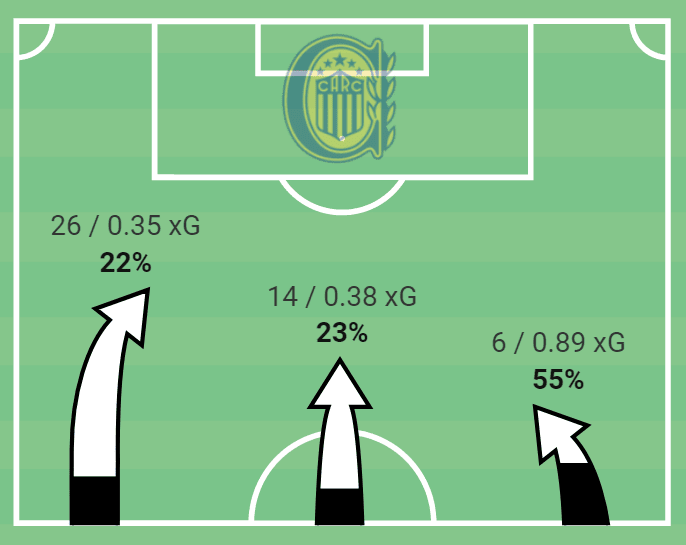
This data visual displays all 46 of the team’s positional attacks from their most recent league outing against Unión Santa Fe. Exactly 26, which is more than half, were down the left flank. Overall, 32 of the 46 positional attacks were directed from the wide areas.
One of the key tactical instructions in this 1-1 draw, and in general from Tevez, was to get Lautaro Blanco on the ball. Blanco, who began as the left midfielder before showing his versatility and pushing down to left-back, whipped 20 crosses into the box in that game which was more than half of Central’s 38 total crosses.
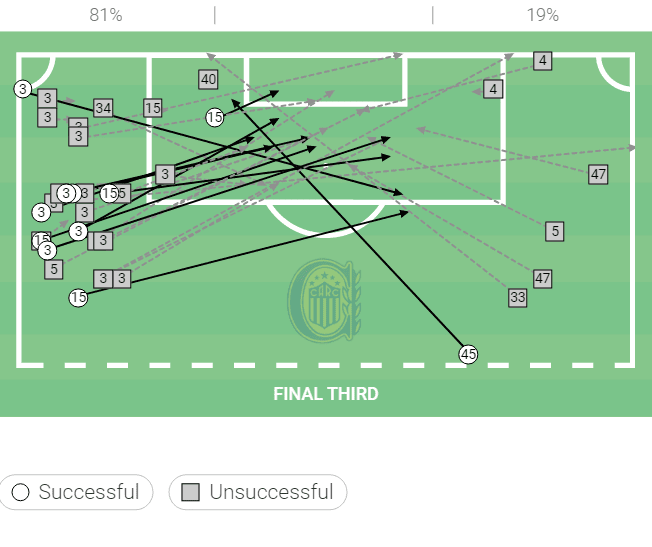
Central have averaged 18.83 crosses per 90 this season with an accuracy of 31.9 percent. No side has averaged more in the Primera Division.
In the end, the equalising goal against Sante Fe came from a crossing situation, but it was the second phase from a corner and the source wasn’t Blanco despite his vast quantity of deliveries. The issue that Tevez has found is that crosses are low percentage opportunities, and relying on them during the attacking phases leads to poor xG chances.
So far in 2022, Rosario Central have averaged an xG of 0.89 per 90, the seventh-lowest in the division. Being so cross-heavy is certainly one of the reasons behind the side’s goalscoring struggles.
Low block with lightning transitions
Central do press high up the pitch and are actually one of the most intense pressing sides in Argentina’s top-flight division. Tevez’s team boast a lowly rate of 7.61 Passes allowed Per Defensive Actions this season, although the numbers also take into account matches from his predecessor González’s time in charge.
Furthermore, Rosario Central’s challenge intensity currently stands at exactly 8 which is the fifth-highest in the league. Challenge intensity quantifies how many defensive actions a defensive side makes per minute of opposition possession, and Central’s high rate shows just how active the team are when pressing in the final third.
The centre-forward is always the player that initiates and leads Central’s high pressing under the UEFA Champions League-winner. We can see this through Alejo Véliz’s pressing stats for 2022.
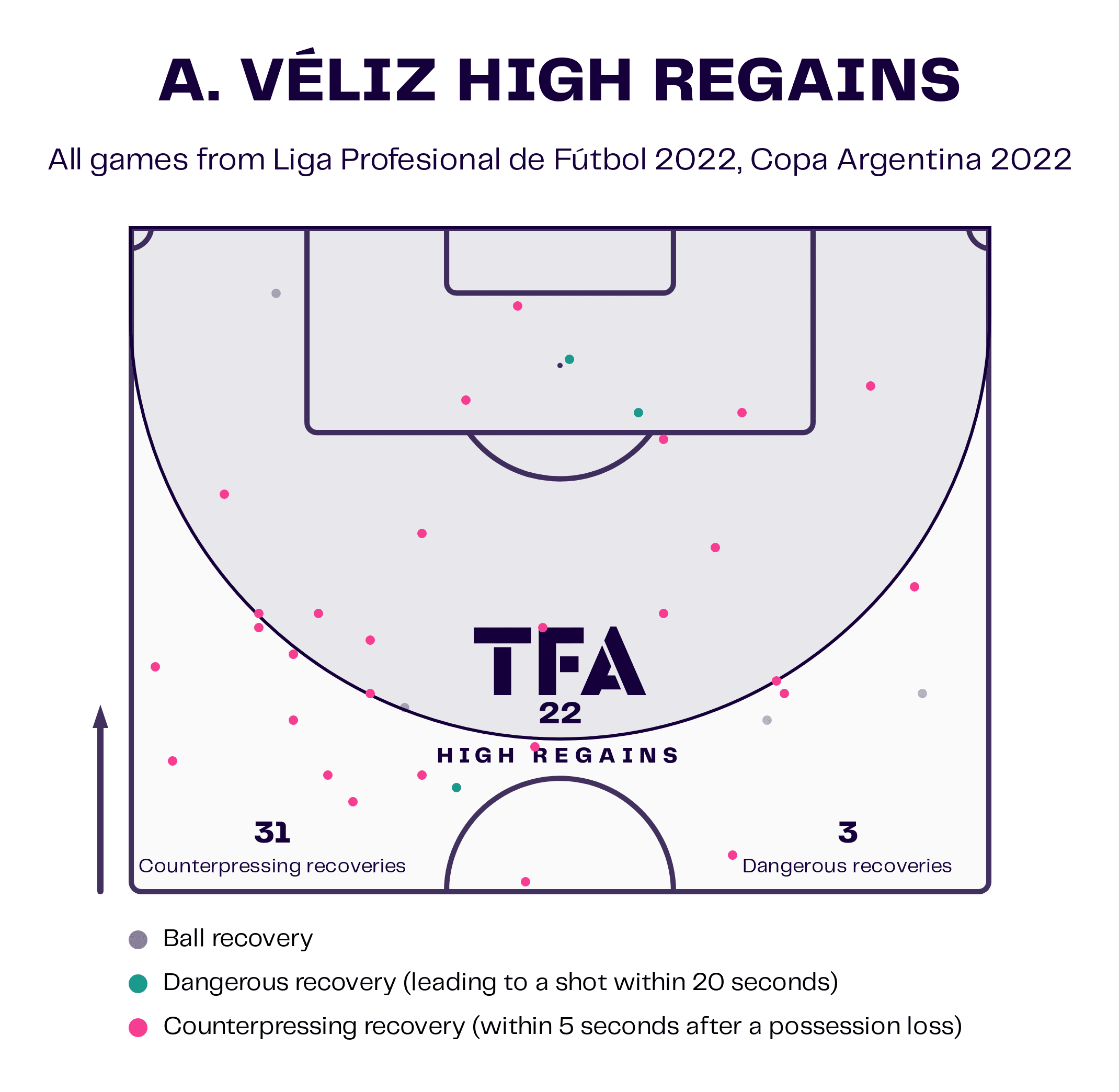
The youngster has registered 22 high regains, 31 counterpressing recoveries and 3 dangerous recoveries.
When the Canalla are pressing high against an opponent who is trying to build out from the back, Tevez deploys a mixed zonal-man-oriented system. What makes it mixed is that one of the wingers remains zonal, backing off their opponent until the ball is moved to their side of the pitch which gives the structure a nice balance.
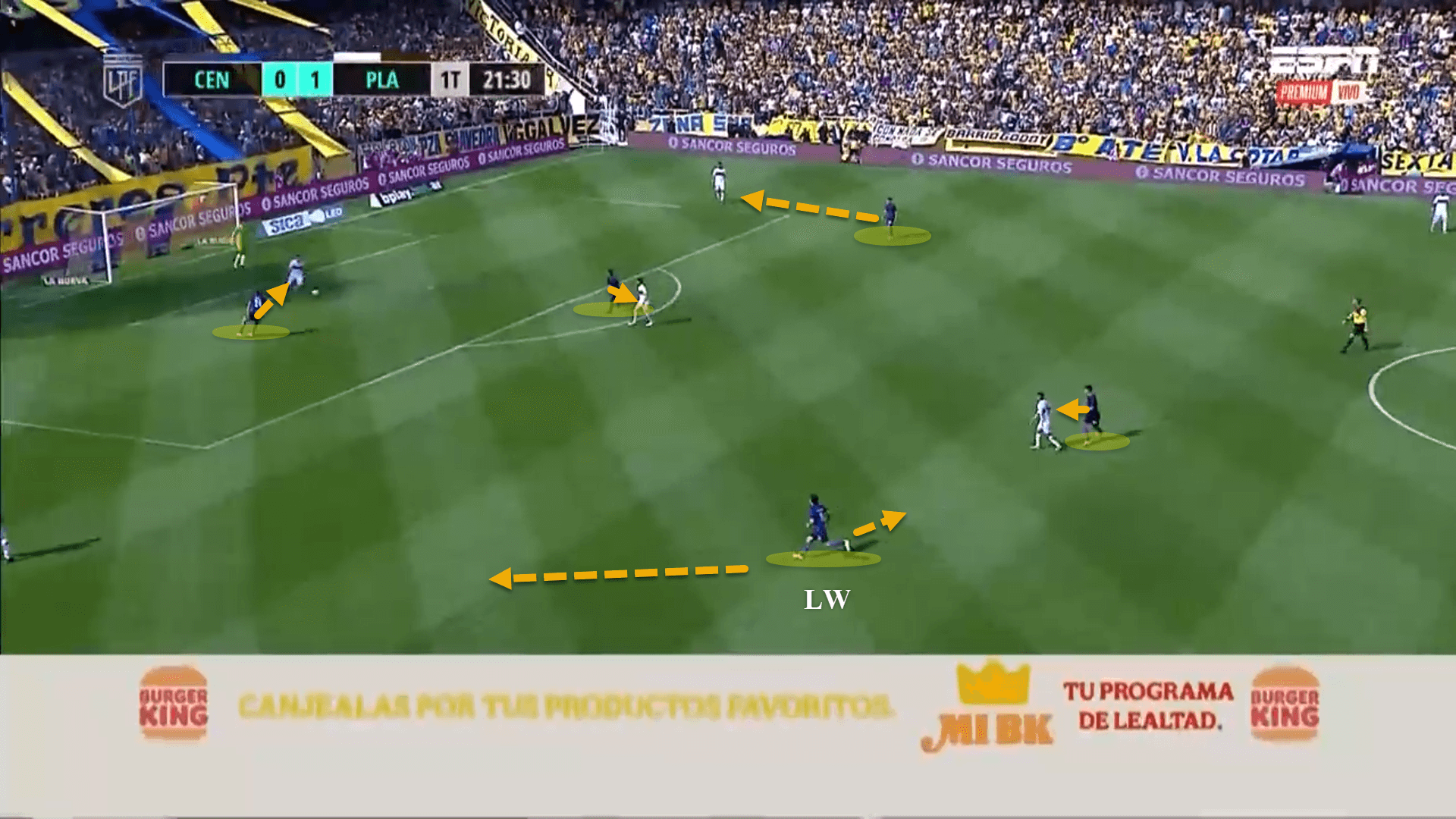
For instance, the left-winger in the above example of the man providing balance to Central’s pressing. He is holding off pressing his man until the ball moves to his side. If it is played across to the opposite flank, the wide player will simply tuck inside, and mark the nearest central option. Balance is key for pressing and Tevez has managed to bring this into Central’s defensive principles.
Once the team’s initial pressure is broken, Rosario Central drop off into a mean low block. During this phase, one of the wingers collapses into the backline, while the midfield reshuffle to cover the width of the pitch. In turn, the shape switches from a 4-1-4-1 to a temporary 5-4-1.
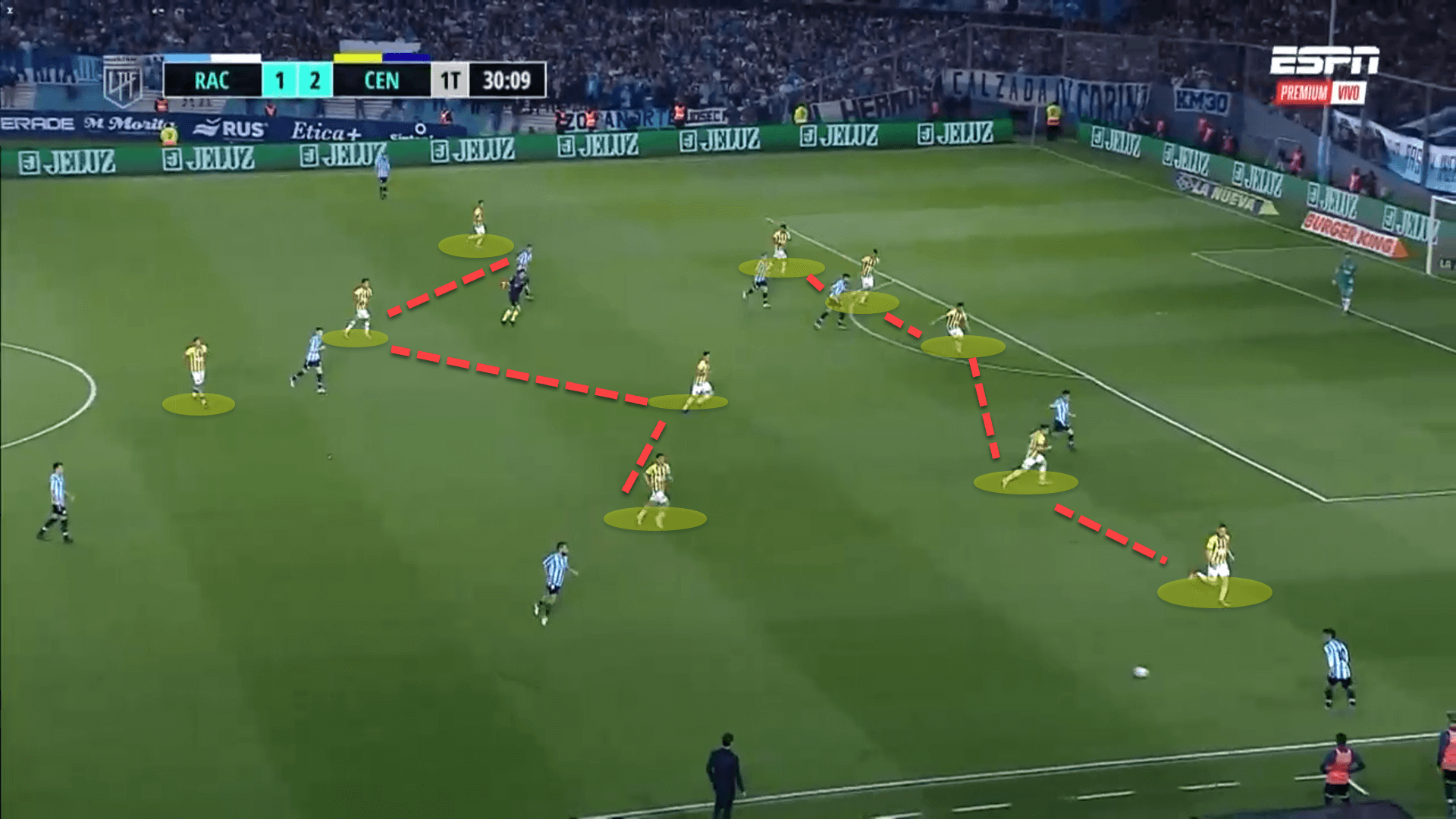
This is one of the reasons why Tevez likes to employ Blanco as a left midfielder despite being a natural left-back. The 23-year-old is able to fill in as an auxiliary left wingback when necessary as the team settle into a deeper defensive shape to close off the space between the goalkeeper and the backline.
The objective in this position is never just to soak up pressure and hope not to concede. Rosario Central are always proactive, hunting the ball down with the aim of being able to take advantage of the space left behind the opposition’s defence.
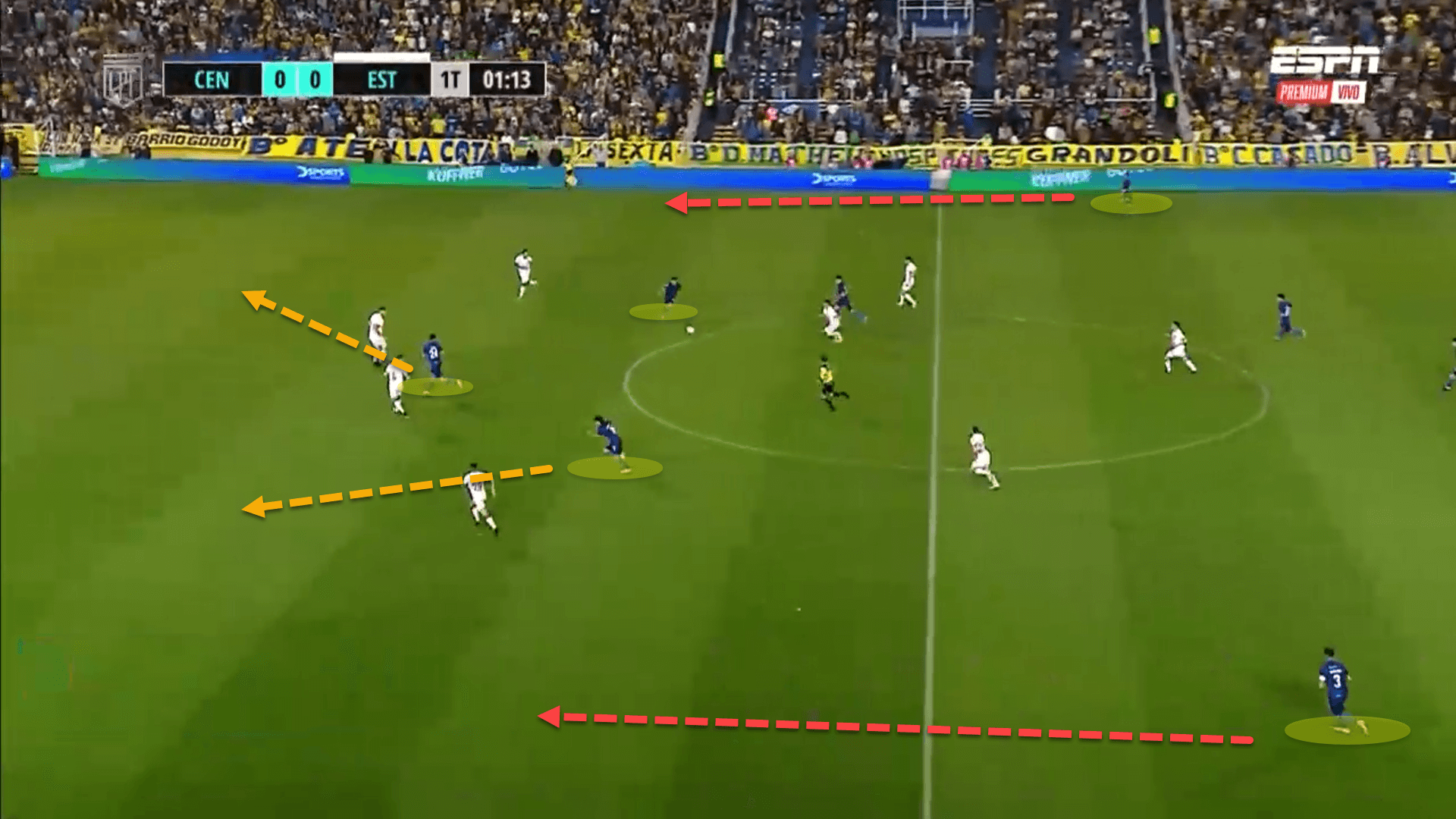
The Canalla have blistering pace in transition and are quite dangerous too, always ensuring that there are plenty of running options in behind to pass to in space.
Counterattacking moments are where the side look most dangerous, and their efficacy allows Tevez to switch between dominating possession in certain games to dropping back and hitting sides on the break in others.
Conclusion
It’s a tough position to be in for Tevez. He has adopted a flexible tactical approach to give the side the best opportunity to be malleable against better opposition but the team’s goalscoring struggles have made it difficult for Rosario Central to pick up easy points, playing out quite a lot of draws already in 2022 under his guidance.
Nevertheless, the Argentine took over a really difficult job and will still need more time to fully implement his philosophy on the side. Hopefully, the board allow him the time necessary to do so.






Comments